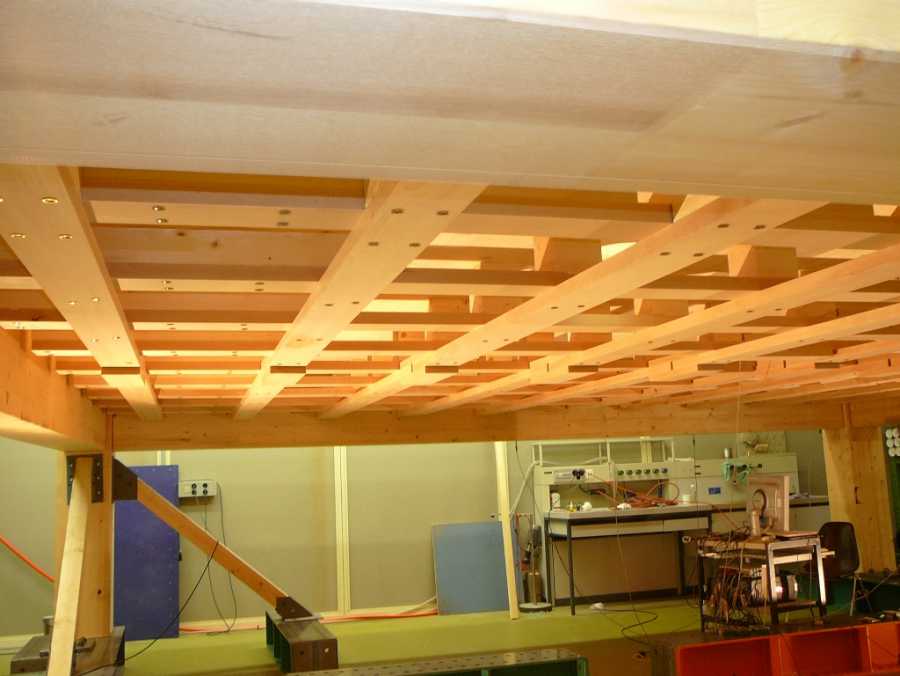Biaxial timber slab
One crucial result of the recent Swiss National Forest Inventory from 2004-2006 is a volume increase of 10.4% for hardwood. The softwood volume, in contrast, has decreased. Other European countries confirm this tendency.This means that more hardwood will be available in the future, especially beech. in Switzerland, most of the the harvested hardwood is used directly for energetic purposes instead of adding value to it by using the hardwood for other more valuable applications. Thus, the goal is to develop new applications for hardwood. For this reason, a biaxial timber slab has been developed using beech wood.
A cross laminated timber slab is connected with beech lamella through studs. The idea is that the beech boards act as a tie rod. At the support larger glulam elements act as reinforcement to handle the shear forces. All joints are glued in order to get rigid connection. Totally 10 beech lamella are being used for each direction. The slab is placed on the post-tensioned timber frame. The span is 6.5 m for both directions.
The developed timber slab was tested in the laboratory of the ETH in 2011. Dynamic tests on the slab were executed before and after the beech lamella were attached to the slab. The dynamic tests led to the result that the stiffness could be increased by a factor of 3.8.
Static tests with different load cases led to the conclusion that 60% of the load is transferred in one direction, whereas the other direction transfers 40% of the load to the support. If the load is evenly distributed, the structural behaviour is similar to an inverted bowstring beam. The measured deflections could be verified by a simple hand calculation. If the load is applied only on one side of the slab, the structural behaviour is different. The slab acts more like a Vierendeel truss than an inverted bowstring beam.
Pictures timber slab
-

Timber slab tested at ETH in 2011. (Photo: ETH Zurich) -

Beech lamellae. (Photo: ETH Zurich) -

Timber slab on a post-tensioned timber frame in 2011. (Photo: ETH Zurich)